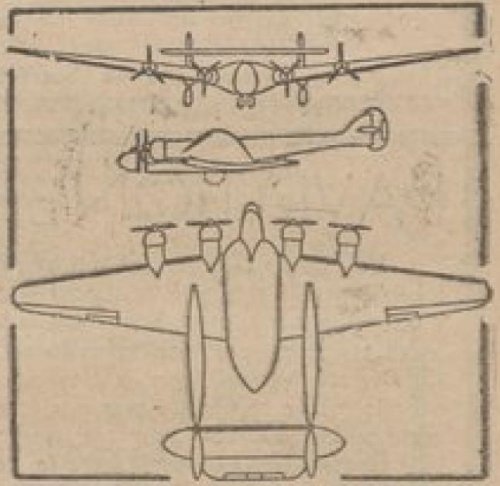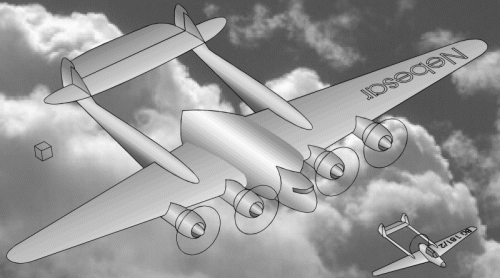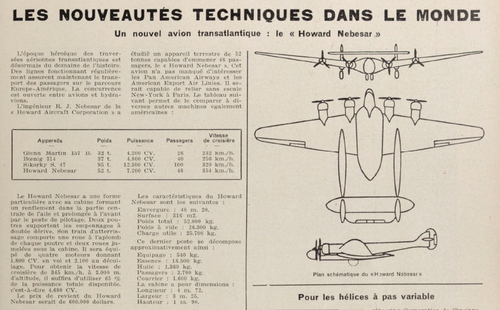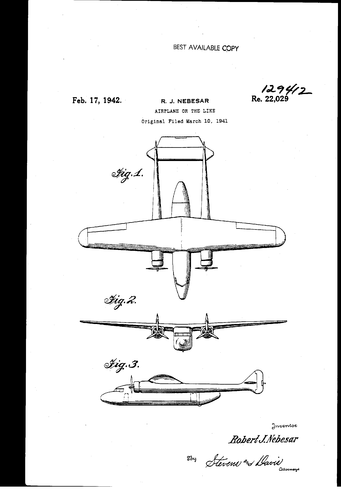Wow. It seems that the mysterious R.J. Nebesar is no-one else than dr. Robert Nebesář, radical but unsuccesfull designer of the Avia a.s. pro průmysl letecký. I just found a jstor page about an article written by "Robert J. Nebesar" of "Avia Aircraft Corp".
https://www.jstor.org/stable/44467982?seq=1
Robert Nebesář spent some time in the early 30s in the USA, and was definitely influenced by it. For the Avia company, he projected Avia Av-51 and Av-57 three-engined passenger planes, very similar except for the wing placement, and Av-156 single-engined fast postal airplane. Both Av-57 and Av-156 were destroyed in crashes - in the same day. Av-51 high-wing passenger plane was rejected by the presumed customer, Czechoslovak Transport Company airlines, due to high vibrations, but still three machines were built and trough fictional Estonian customer supplied to the Republican Spain. His last know work in the Avia company was the B-158 bomber, interresting and modern airplane that also ended as prototype only. No other project of Nebesář is known to me. Presumably in 1938, after the Munich crisis (an maybe even before that), he emigrated to the Great Britain (he is mentioned as resident of Bristol in 1941) and later to the USA and started working on a transatlantic airplane design...
https://patents.google.com/patent/USRE22029
I would check Václav Němeček and his Československá letadla, but this damn cat sleeping on my lap prevents me from reaching my library. Maybe later.
P.S.: Oh the irony: "Carrying from fourteen to sixteen passengers, the Aria(sic!) 57, with three 575 h.p. radials of "Cyclone" type, cruises at 180 m.p.h. Dr. Robert J. Nebesar, the designer of the machine, tells us he is quite satisfied with the results of test flights." That was before it killed everybody on board, obviously.
MARCH 14. J935- FLIGHT. 291 Commercial Aviation < . .-*•* . CZECHOSLOVAKIAN : Carrying from fourteen to sixteen passengers, the Aria 57, with three 575 h.p. radials of " Cyclone " type, cruises at
www.flightglobal.com
P.P:S.: Accordding to Němeček, Nebesář spent some time in the Martin, Lockheed and Consolidated companies and had complete trust of the Škoda company, owner of Avia. His first project was Avia 50, sort-of Lockheed Vega copy from 1931 and precursor to the Av-51, five-passenger machine with T-shaped tail surfaces and three Avia R-7 engines. Another Vega-like machine was Av-56 with one Avia Rr-29 radial engine, which after the engine switch to Avia HS 12Ybr led to afore-mentioned Av-156. The last project mentioned is Av-58, obviously a precursor for Av-158, a two-engined fixed-wheel monstrosity with Avia Rk-17 engines mostly similar to the LACAB Doryphore, if it was a low-wing monoplane. In 1937 Nebesář worked on Avia 63, Czech variant of Potez 636 with single tailplane instead of twin. Due to the immaturity of the original machine, licence negotiation fell and work stopped. And as I thought, in 1938/1939 Nebesář emigrated and spent some time with various small US companies, including Howard Aircraft Co. for which he designed "typically Nebesar-like overblown project, ... five-engined trans-atlantic twin-fuselage passenger plane Howard-Nebesar".
Sadly, this is the last mention of Nebesář I could find.




